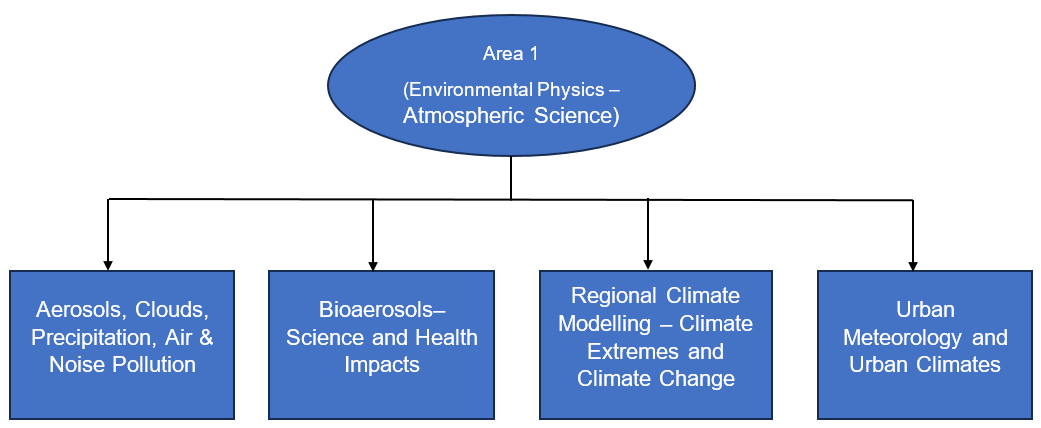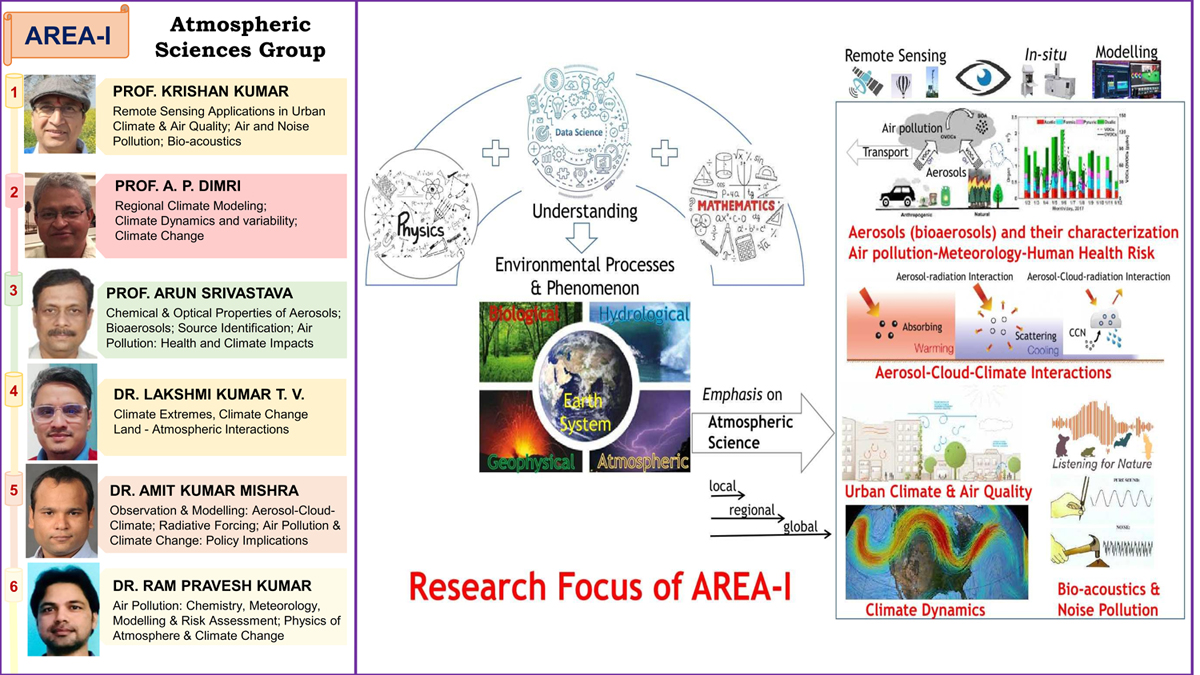
Area 1 faculty of the School of Environmental Sciences focus on the physical and mathematical aspects of the environment, with a particular emphasis on Atmospheric Science. Their research spans a wide range of topics, including air and noise pollution, urban bioacoustics, aerosol–cloud–climate interactions, urban and regional climate, health impacts of atmospheric and bioaerosols, and climate extremes-modeling. This diverse expertise provides a holistic understanding of atmospheric processes and urban environmental challenges. Committed to front-line research, the faculty aims to bridge scientific gaps and develop solutions for pressing environmental and societal challenges.
Area I Faculty
Prof. Krishan Kumar (Convener)Prof. A.P. DimriProf. Arun Kumar SrivastavaDr. Lakshmi Kumar TVDr. Amit Kumar MishraDr. Ram Pravesh Kumar |
|
